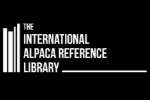Articles by Alpaca World Magazine:
Choanal Atresia
Dr Anibal Armien
Veterinary researchers at the University of Minnesota are close to isolating the gene mutation thought to be responsible for choanal atresia or multiple malformation syndrome in alpaca. Dr Anibal Armien, Associate Clinical Professor of Veterinary Pathology at the University of Minnesota, presented his findings at the 2011 International Conference on Camelid Genetics and Reproductive Biotechnologies in Houston, Texas, in September.
They believe it is similar to the CHARGE syndrome in human beings where neonates and infants present with multiple malformations including choanal atresia and that a gene mutation located in the CHD7 coding region may be responsible in both camelids and humans.
What follows is an abstract from his lecture ? Choanal atresia (CA) is a malformation characterised by an abnormal development of the nasal passages which provide the airway connection between the nose and the larynx. The major clinical presentation of CA in camelids is persistent dyspnea (shortness of breath). Blockage of the choanae (nasal passages), either partial or complete, is especially problematic for newborn cria that are primary nasal breathers. Crias with CA have a severe prognosis with no practical treatment alternative. As a result euthanasia is the only option to relieve the animal from prolonged suffering.
CA is rarely reported in most companion animals but is relatively common in new world camelids occurring in 0.48% and 0.75% of live births in alpacas and llamas (Johnson, 2008), respectively. In all these species clinical and pathological exploration has normally focused on the choanal defects. However, associated cardiac, gastrointestinal, skeletal or neural anomalies are reported in 33% of the choanal cases in llamas.
Lately we are finding evidence that familial and sporadic cases of choanal atresia in alpacas are frequently associated with multiple defects including multiple subtle to marked, cranial bone deformations, hypoplasia and asplasia of cranial nerves and encephalic structures, brain heterotopy, heart defects as well as other defects. The etiology of CA is poorly understood.
Evidence suggests that the condition is a genetically inherited, recessive or perhaps polygenic trait. We hypothesise that choanal atresia in alpacas and llamas is part of a multiple malformation complex which shares major clinical criteria with a similar syndrome CHARGE in humans, caused by a gene mutation (Sanlaville and Verloes 2007). We are currently characterising multiple malformations associated with choanal atresia and working to determine whether in analogy to the human syndrome, a specific gene mutation (CHD7) is the cause of the syndrome in alpacas and or llamas. Recently a sequence of CHD7 coding region was obtained from a non affected cria. The alpaca CHD7 mRNA sequence was 97.9% similar to that of the human, with the greatest sequence difference being an insertion in exon 38. This study provides the genomic reagents necessary to determine if mutations in CHD7 are the cause of CA in camelids (Reed et al 2010).
Tweet



